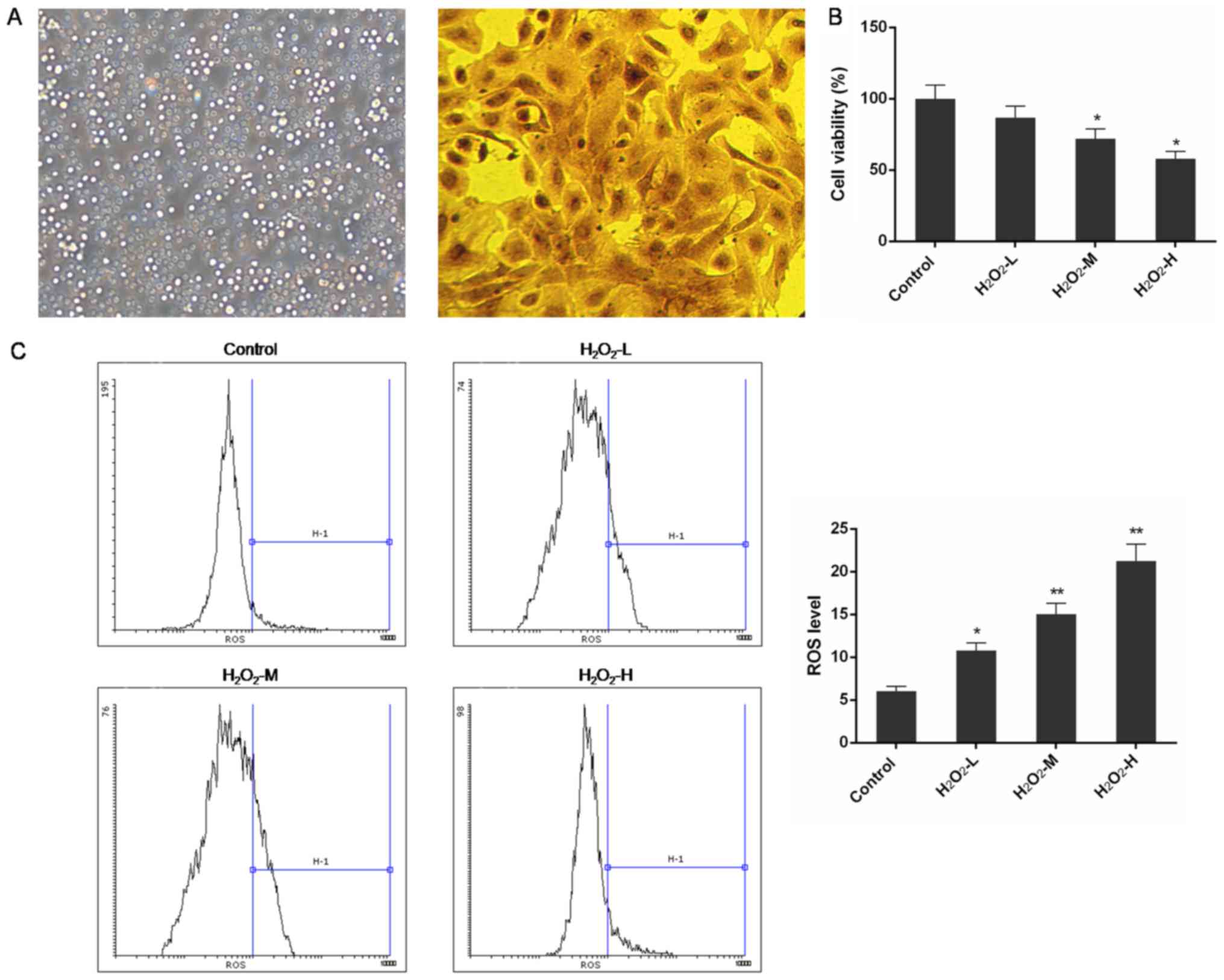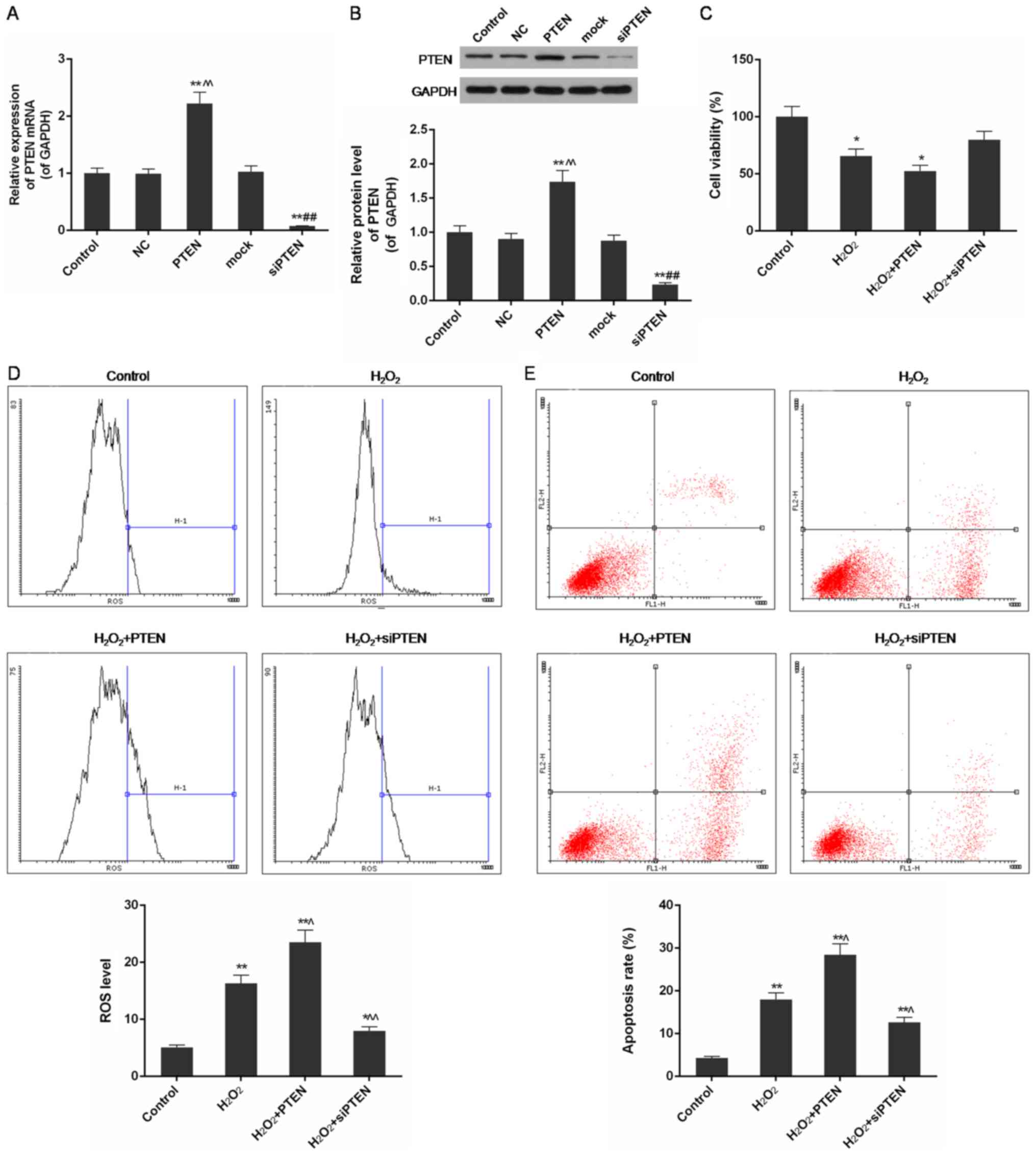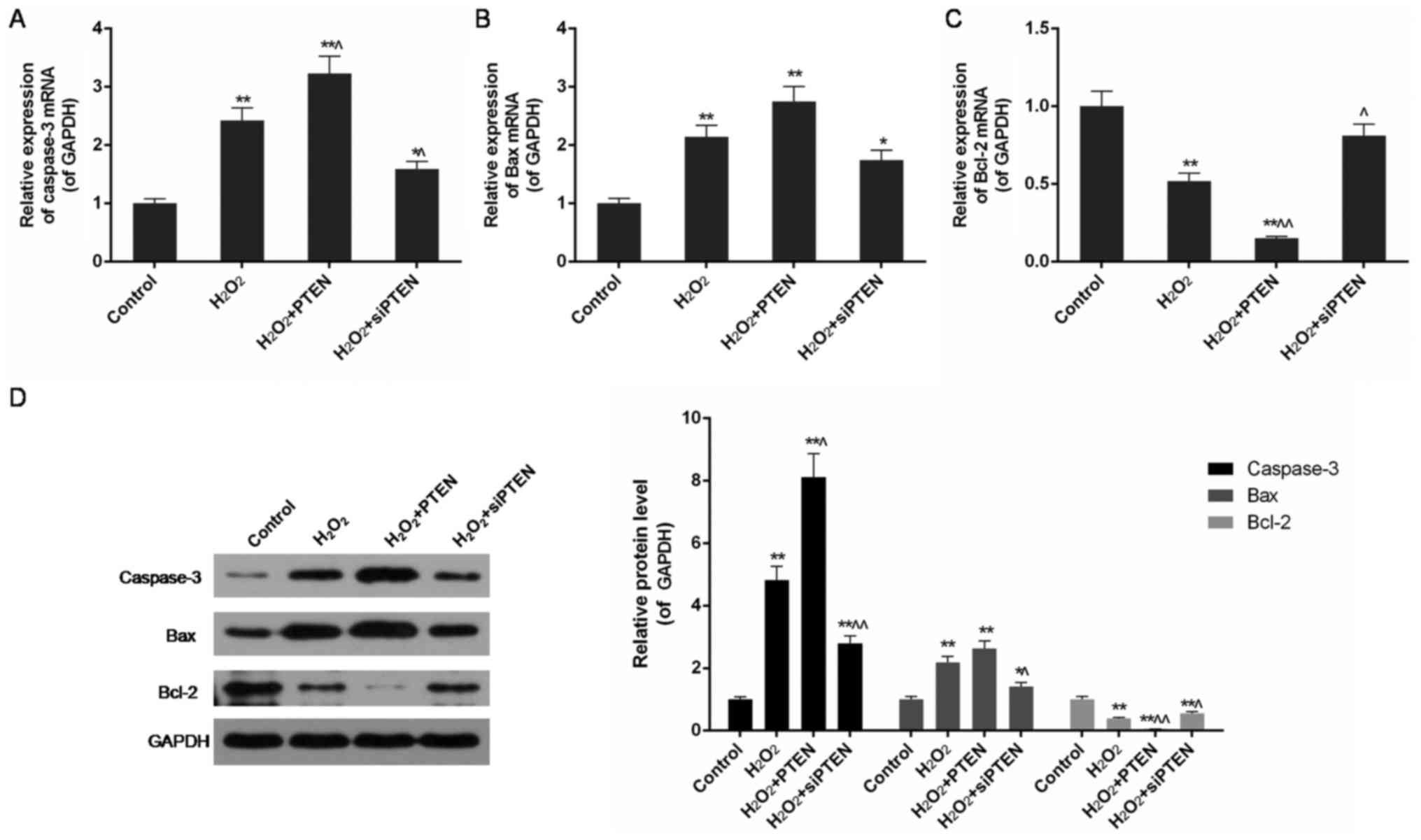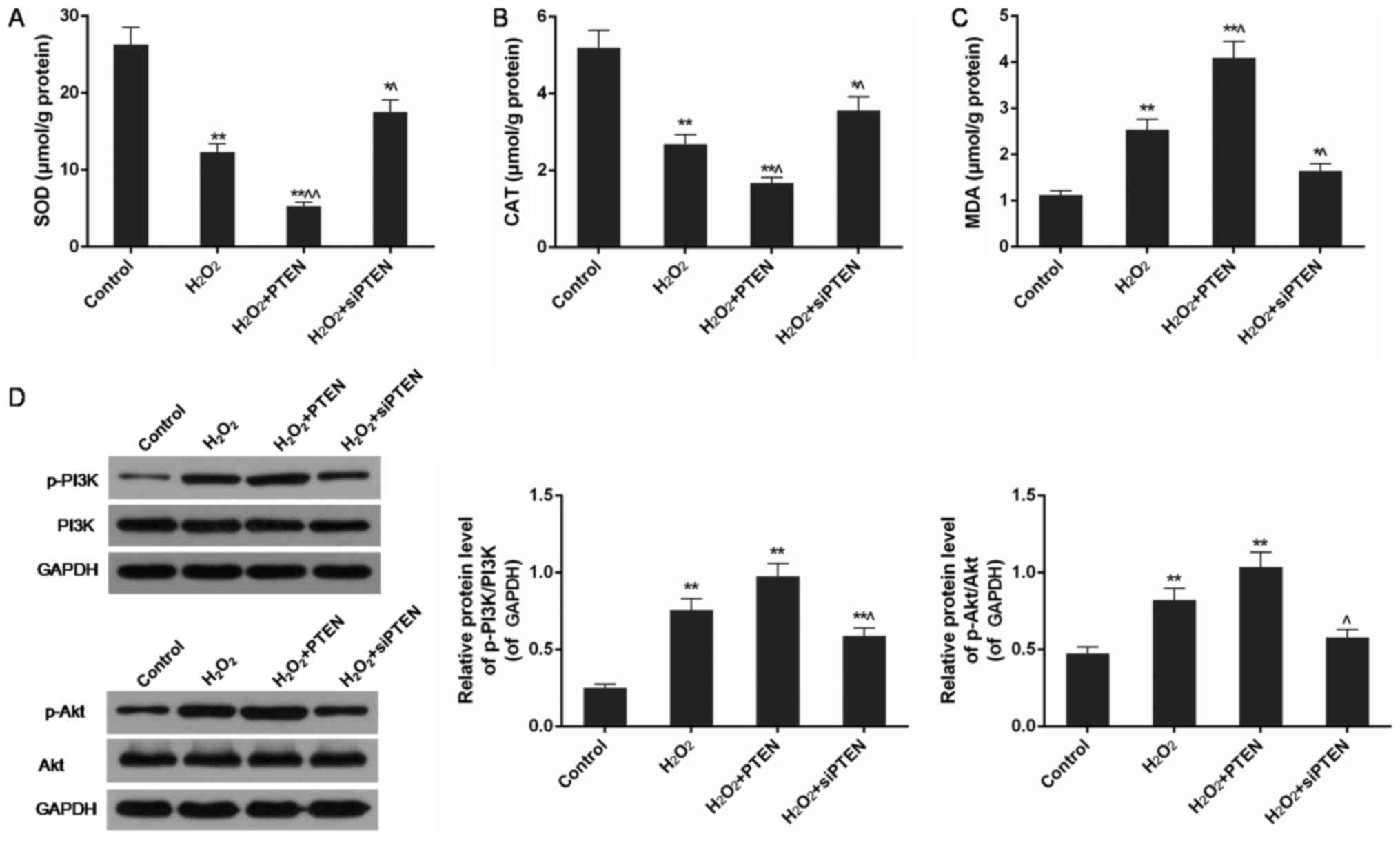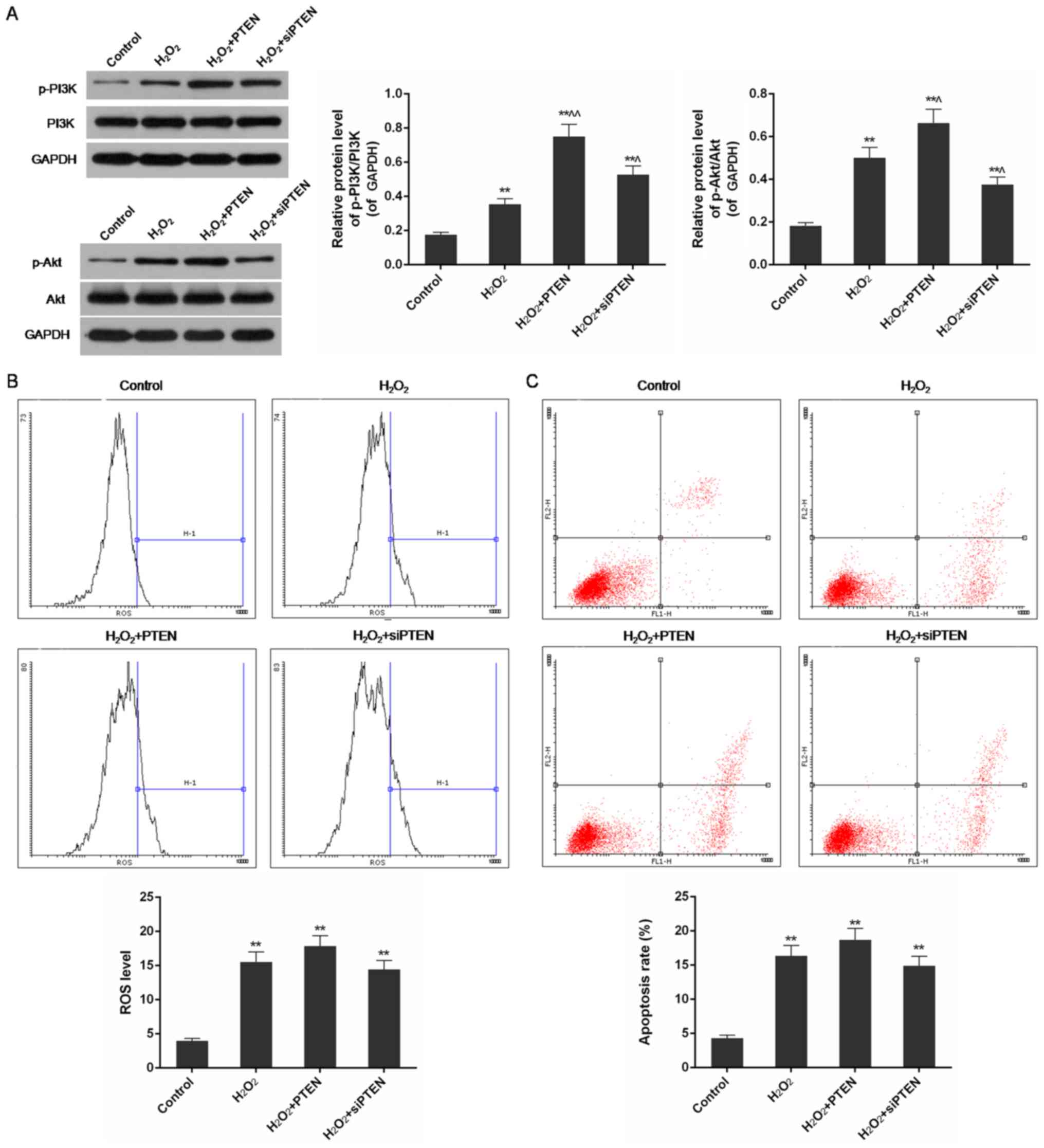|
1
|
Fokkens WJ, Lund VJ, Mullol J, Bachert C,
Alobid I, Baroody F, Cohen N, Cervin A, Douglas R, Gevaert P, et
al: EPOS 2012: European position paper on rhinosinusitis and nasal
polyps 2012. A summary for otorhinolaryngologists. Rhinology.
50:1–12. 2012.PubMed/NCBI
|
|
2
|
Al-Muhsen S, Johnson JR and Hamid Q:
Remodeling in asthma. J Allergy Clin Immunol. 128:451–464. 2011.
View Article : Google Scholar : PubMed/NCBI
|
|
3
|
Dennis SK, Lam K and Luong A: A review of
classification schemes for chronic rhinosinusitis with nasal
polyposis endotypes. Laryngoscope Investig Otolaryngol. 1:130–134.
2016. View Article : Google Scholar : PubMed/NCBI
|
|
4
|
Kato A: Immunopathology of chronic
rhinosinusitis. Allergol Int. 64:121–130. 2015. View Article : Google Scholar : PubMed/NCBI
|
|
5
|
Yang Y, Zhang N, Lan F, Van Crombruggen K,
Fang L, Hu G, Hong S and Bachert C: Transforming growth factor-beta
1 pathways in inflammatory airway diseases. Allergy. 69:699–707.
2014. View Article : Google Scholar : PubMed/NCBI
|
|
6
|
Srivastava S, Singh D, Patel S and Singh
MR: Role of enzymatic free radical scavengers in management of
oxidative stress and autoimmune disorders. Int J Biol Macromol.
101:502–517. 2017. View Article : Google Scholar : PubMed/NCBI
|
|
7
|
Cekin E, Ipcioglu OM, Erkul BE, Kapucu B,
Ozcan O, Cincik H and Gungor A: The association of oxidative stress
and nasal polyposis. J Int Med Res. 37:325–330. 2009. View Article : Google Scholar : PubMed/NCBI
|
|
8
|
Bozkus F, San I, Ulas T, Iynen I, Yesilova
Y, Guler Y and Aksoy N: Evaluation of total oxidative stress
parameters in patients with nasal polyps. Acta Otorhinolaryngol
Ital. 33:248–253. 2013.PubMed/NCBI
|
|
9
|
Okur E, Inanc F, Yildirim I, Kilinc M and
Kilic MA: Malondialdehyde level and adenosine deaminase activity in
nasal polyps. Otolaryngol Head Neck Surg. 134:37–40. 2006.
View Article : Google Scholar : PubMed/NCBI
|
|
10
|
Tanaka Y, Hosoyama T, Mikamo A, Kurazumi
H, Nishimoto A, Ueno K, Shirasawa B and Hamano K: Hypoxic
preconditioning of human cardiosphere-derived cell sheets enhances
cellular functions via activation of the PI3K/Akt/mTOR/HIF-1α
pathway. Am J Transl Res. 9:664–673. 2017.PubMed/NCBI
|
|
11
|
Li J, Yen C, Liaw D, Podsypanina K, Bose
S, Wang SI, Puc J, Miliaresis C, Rodgers L, McCombie R, et al:
PTEN, a putative protein tyrosine phosphatase gene mutated in human
brain, breast, and prostate cancer. Science. 275:1943–1947. 1997.
View Article : Google Scholar : PubMed/NCBI
|
|
12
|
Getahun A, Wemlinger SM, Rudra P, Santiago
ML, van Dyk LF and Cambier JC: Impaired B cell function during
viral infections due to PTEN-mediated inhibition of the PI3K
pathway. J Exp Med. 214:931–941. 2017. View Article : Google Scholar : PubMed/NCBI
|
|
13
|
Tian H, Ge C, Zhao F, Zhu M, Zhang L, Huo
Q, Li H, Chen T, Xie H, Cui Y, et al: Downregulation of AZGP1 by
Ikaros and histone deacetylase promotes tumor progression through
the PTEN/Akt and CD44s pathways in hepatocellular carcinoma.
Carcinogenesis. 38:207–217. 2017.PubMed/NCBI
|
|
14
|
Yu M, Mu Y, Qi Y, Qin S, Qiu Y, Cui R and
Zhong M: Odontogenic ameloblast-associated protein (ODAM) inhibits
human colorectal cancer growth by promoting PTEN elevation and
inactivating PI3K/AKT signaling. Biomed Pharmacother. 84:601–607.
2016. View Article : Google Scholar : PubMed/NCBI
|
|
15
|
Xiao J, Yu W, Hu K, Li M, Chen J and Li Z:
miR-92a promotes tumor growth of osteosarcoma by targeting PTEN/AKT
signaling pathway. Oncol Rep. 37:2513–2521. 2017. View Article : Google Scholar : PubMed/NCBI
|
|
16
|
Zhang X, Chen Y, Zhao P, Zang L, Zhang Z
and Wang X: MicroRNA-19a functions as an oncogene by regulating
PTEN/AKT/pAKT pathway in myeloma. Leuk Lymphoma. 58:932–940. 2017.
View Article : Google Scholar : PubMed/NCBI
|
|
17
|
Yadav UC, Naura AS, Aguilera-Aguirre L,
Boldogh I, Boulares HA, Calhoun WJ, Ramana KV and Srivastava SK:
Aldose reductase inhibition prevents allergic airway remodeling
through PI3K/AKT/GSK3β pathway in mice. PLoS One. 8:e574422013.
View Article : Google Scholar : PubMed/NCBI
|
|
18
|
Guillermet-Guibert J, Bjorklof K, Salpekar
A, Gonella C, Ramadani F, Bilancio A, Meek S, Smith AJ, Okkenhaug K
and Vanhaesebroeck B: The p110beta isoform of phosphoinositide
3-kinase signals downstream of G protein-coupled receptors and is
functionally redundant with p110gamma. Proc Natl Acad Sci USA.
105:8292–8297. 2008. View Article : Google Scholar : PubMed/NCBI
|
|
19
|
Schmid MC, Avraamides CJ, Dippold HC,
Franco I, Foubert P, Ellies LG, Acevedo LM, Manglicmot JR, Song X,
Wrasidlo W, et al: Receptor tyrosine kinases and TLR/IL1Rs
unexpectedly activate myeloid cell PI3kγ, a single convergent point
promoting tumor inflammation and progression. Cancer Cell.
19:715–727. 2011. View Article : Google Scholar : PubMed/NCBI
|
|
20
|
Padala RR, Karnawat R, Viswanathan SB,
Thakkar AV and Das AB: Cancerous perturbations within the ERK,
PI3K/Akt, and Wnt/β-catenin signaling network constitutively
activate inter-pathway positive feedback loops. Mol Biosyst.
13:830–840. 2017. View Article : Google Scholar : PubMed/NCBI
|
|
21
|
Xuan W, Feng X, Qian C, Peng L, Shi Y, Xu
L, Wang F and Tan W: Osteoclast differentiation gene expression
profiling reveals chemokine CCL4 mediates RANKL-induced osteoclast
migration and invasion via PI3K pathway. Cell Biochem Funct.
35:171–177. 2017. View Article : Google Scholar : PubMed/NCBI
|
|
22
|
Stocker H, Andjelkovic M, Oldham S,
Laffargue M, Wymann MP, Hemmings BA and Hafen E: Living with lethal
PIP3 levels: Viability of flies lacking PTEN restored by a PH
domain mutation in Akt/PKB. Science. 295:2088–2091. 2002.
View Article : Google Scholar : PubMed/NCBI
|
|
23
|
Wu X, Hepner K, Castelino-Prabhu S, Do D,
Kaye MB, Yuan XJ, Wood J, Ross C, Sawyers CL and Whang YE: Evidence
for regulation of the PTEN tumor suppressor by a membrane-localized
multi-PDZ domain containing scaffold protein MAGI-2. Proc Natl Acad
Sci USA. 97:4233–4238. 2000. View Article : Google Scholar : PubMed/NCBI
|
|
24
|
Schneider E, Keppler R, Prawitt D,
Steinwender C, Roos FC, Thüroff JW, Lausch E and Brenner W:
Migration of renal tumor cells depends on dephosphorylation of Shc
by PTEN. Int J Oncol. 38:823–831. 2011.PubMed/NCBI
|
|
25
|
Goo CK, Lim HY, Ho QS, Too HP, Clement MV
and Wong KP: PTEN/Akt signaling controls mitochondrial respiratory
capacity through 4E-BP1. PLoS One. 7:e458062012. View Article : Google Scholar : PubMed/NCBI
|
|
26
|
Hua S, Yao M, Vignarajan S, Witting P,
Hejazi L, Gong Z, Teng Y, Niknami M, Assinder S, Richardson D and
Dong Q: Cytosolic phospholipase A2α sustains pAKT, pERK and AR
levels in PTEN-null/mutated prostate cancer cells. Biochim Biophys
Acta. 1831:1146–1157. 2013. View Article : Google Scholar : PubMed/NCBI
|
|
27
|
Bai ZG, Ye YJ, Shen DH, Lu YY, Zhang ZT
and Wang S: PTEN expression and suppression of proliferation are
associated with Cdx2 overexpression in gastric cancer cells. Int J
Oncol. 42:1682–1691. 2013. View Article : Google Scholar : PubMed/NCBI
|
|
28
|
Banham-Hall E, Clatworthy MR and Okkenhaug
K: The therapeutic potential for PI3K inhibitors in autoimmune
rheumatic diseases. Open Rheumatol J. 6:245–258. 2012. View Article : Google Scholar : PubMed/NCBI
|
|
29
|
Tamura N: Recent findings on
phosphoinositide-3 kinase in rheumatic diseases. Nihon Rinsho
Meneki Gakkai Kaishi. 35:8–13. 2012.(In Japanese). View Article : Google Scholar : PubMed/NCBI
|
|
30
|
Jang HY, Kwon OK, Oh SR, Lee HK, Ahn KS
and Chin YW: Mangosteen xanthones mitigate ovalbumin-induced airway
inflammation in a mouse model of asthma. Food Chem Toxicol.
50:4042–4050. 2012. View Article : Google Scholar : PubMed/NCBI
|
|
31
|
Juss JK, Hayhoe RP, Owen CE, Bruce I,
Walmsley SR, Cowburn AS, Kulkarni S, Boyle KB, Stephens L, Hawkins
PT, et al: Functional redundancy of class I phosphoinositide
3-kinase (PI3K) isoforms in signaling growth factor-mediated human
neutrophil survival. PLoS One. 7:e459332012. View Article : Google Scholar : PubMed/NCBI
|
|
32
|
Dong J, Shang Y, Inthavong K, Tu J, Chen
R, Bai R, Wang D and Chen C: From the cover: Comparative numerical
modeling of inhaled nanoparticle deposition in human and rat nasal
cavities. Toxicol Sci. 152:284–296. 2016. View Article : Google Scholar : PubMed/NCBI
|
|
33
|
Biswas K, Chang A, Hoggard M, Radcliff FJ,
Jiang Y, Taylor MW, Darveau R and Douglas RG: Toll-like receptor
activation by sino-nasal mucus in chronic rhinosinusitis.
Rhinology. 55:59–69. 2017.PubMed/NCBI
|
|
34
|
Langlois MJ, Roy SA, Auclair BA, Jones C,
Boudreau F, Carrier JC, Rivard N and Perreault N: Epithelial
phosphatase and tensin homolog regulates intestinal architecture
and secretory cell commitment and acts as a modifier gene in
neoplasia. FASEB J. 23:1835–1844. 2009. View Article : Google Scholar : PubMed/NCBI
|
|
35
|
Tyner JW, Kim EY, Ide K, Pelletier MR,
Roswit WT, Morton JD, Battaile JT, Patel AC, Patterson GA, Castro
M, et al: Blocking airway mucous cell metaplasia by inhibiting EGFR
antiapoptosis and IL-13 transdifferentiation signals. J Clin
Invest. 116:309–321. 2006. View Article : Google Scholar : PubMed/NCBI
|
|
36
|
El-Shitany NA and Eid B: Proanthocyanidin
protects against cisplatin-induced oxidative liver damage through
inhibition of inflammation and NF-κβ/TLR-4 pathway. Environ
Toxicol. 32:1952–1963. 2017. View Article : Google Scholar : PubMed/NCBI
|
|
37
|
Dede H, Takmaz O, Ozbasli E, Dede S and
Gungor M: Higher level of oxidative stress markers in small for
gestational age newborns delivered by cesarean section at term.
Fetal Pediatr Pathol. 36:232–239. 2017. View Article : Google Scholar : PubMed/NCBI
|
|
38
|
Chetram MA and Hinton CV: PTEN regulation
of ERK1/2 signaling in cancer. J Recept Signal Transduct Res.
32:190–195. 2012. View Article : Google Scholar : PubMed/NCBI
|
|
39
|
Yang S and Kim HM: The RhoA-ROCK-PTEN
pathway as a molecular switch for anchorage dependent cell
behavior. Biomaterials. 33:2902–2915. 2012. View Article : Google Scholar : PubMed/NCBI
|



